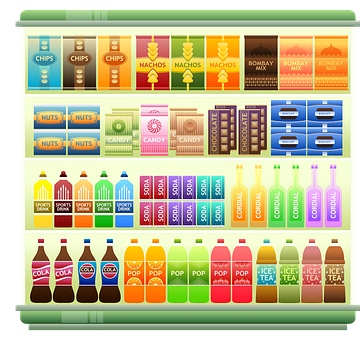How To Design The Perfect Food That Is Addictive And Extremely Profitable Without Real Regard For Your Family’s Health
This post talks about the food industry and how it designs processed food to drive more sales.
This article is taken from a few sources including an excellent article posted in the NY Times written by Michale Moss (cited at end of post).
This is a very interesting insider’s look into the processed food industry with a lot more going on behind the scenes than you realize.
The processed food industry employs chemists, engineers, psychophysicists, and psychologists to manipulate you and your kids to eat more of their foods.
They use computer algorithms to identify the best combinations of chemicals, sugar, starch, fat, and salt so that you buy more of their products.
It makes sense when you think about it.
The food companies are in business and business’ lifeline is income.
The problem is that it comes at great cost to you and your family’s health.
How to drive up endorphins and dopamine in your brain and your kid’s brain…
The food industry s the complex processes that the food industry uses to reach the ‘bliss point.’
The bliss point is the perfect balance of flavoring and ‘mouth feel‘ that takes advantage of our drive to eat certain things that would have helped us long before we had stores full of highly processed packaged foods.
The processed food industry uses enough specific flavoring, sugar, starch,and more to stimulate our sense of taste just enough that we want more, but not too much where we would experience ‘sensory-specific satiety‘ that would have us think we’ve had enough.
The starch content is interesting from both an addiction and a marketing angle.
The starch can be rapidly broken down into sugars that we naturally crave.
Sure it drives up blood sugar and insulin levels too which help drive our country’s massive health crisis, but…
At the same time, the starch is not listed as sugar on the label.
It’s under carbohydrates but not where most people look… it’s not under sugar content.
Now it’s lower in ‘sugar,’ so you can feel better about eating it.
Wait… there’s more!
They consider ‘vanishing caloric density‘ meaning that they can trick your brain into thinking that the product doesn’t have any/many calories by having the product melt in your mouth.
The article uses Cheetos as the perfect example of this.
They also needed to make sure their products could sit around for months in warehouses and on the shelves without spoiling.
This gives them a huge advantage over meats, vegetables, and fruits which will spoil (even though those industry has figured out chemicals to add to them to reduce their spoilage).
Of course, the companies have to consider price point too.
Can they use ingredients that are so cheap that they can have a good price point while still being both addictive and profitable?
Even after creating these food products the work isn’t done.
Marketing with the right packaging, positioning, and commercials in various media…
For example, toasted chips sound so much more healthy than fried ones.
It means the same thing, but you can feel better about eating the ones labeled ‘toasted.’
Where are the packages put on the shelves so you or your kids will be drawn to the boxes and bags like a moth to light?
Kids can’t see or reach the foods on the top shelf.
Much of the food industry relies heavily upon your kids wanting their highly processed food.
You can blame the manufacturers to some degree every time your little one nags you about buying some ‘food’ product.
Taking a step back, the industry has to look at public opinion.
Does the public want low fat, low sugar, low salt, ‘all natural,’ or something else?
Are we, as a huge market, concerned about a particular chemical that has started hitting the news lately… or do we want ‘gluten free‘ or something else.
Frito Lay is apparently working on a fake sodium that will taste like salt but not be actual salt.
This would be a huge as then they can label their products low salt by adding these new chemicals to the food.
These are all marketing angles that can be used to sell us more packaged foods.
It’s complicated, how to sell processed foods and essentially create addiction, but the pay off is huge in a $2 trillion plus industry that puts you and your family at serious risk.
We are not helplessly at the mercy of huge food conglomerates though.
We have a choice about what we buy and what we eat.
Changing our buying habits and really paying attention to healthy food will force companies to move in a healthier direction.
We are telling them what we want every time we purchase our groceries.
Sources for article…
www.nytimes.com/2013/02/24/magazine/the-extraordinary-science-of-junk-food.html
www.npr.org/sections/thesalt/2015/12/16/459981099/how-the-food-industry-helps-engineer-our-cravings
 Protected by Patchstack
Protected by Patchstack
Leave a Reply